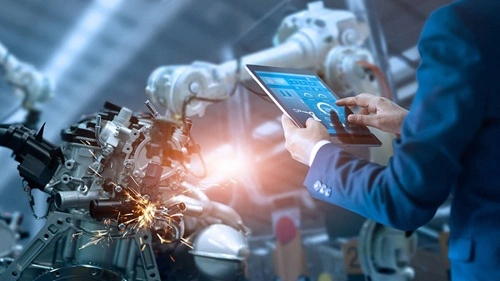Businesses handling LPG should undergo regular inspection not just as formality but as safety essential. That is why only certified professionals should conduct these inspections in order to assess hidden damage without interrupting operations. The use of non destructive testing (this is commonly referred to as การทดสอบแบบไม่ทำลาย in Thai) or NDT should help business owners stay prepared, reduce risk, and avoid costly shutdowns.

How Non Destructive Testing Works for LPG Inspection
The use of NDT will enable professionals to evaluate the condition of materials, components, and systems without causing damage. This is widely utilised in industries like oil and gas, aerospace, construction, and LPG storage in order to detect the occurrence of cracks, corrosion, leaks, or structural weaknesses. All this will be carried out without even shutting down your business operations.
1. Ultrasonic Testing
This method will send high-frequency sound waves into the material. So, when there is a crack or flaw, the sound wave will reflect back and help locate and measure it.
2. Radiographic Testing
Internal images are also produced with the use of x-rays or gamma rays reflecting the structure of tanks, welds, or pipes. This can be comparable to an industrial x-ray.
3. Magnetic Particle Testing
When you apply a magnetic field to a metal surface, iron particles will reveal the surface or near-surface cracks. This gives an accurate picture of what is being tested.
4. Dye Penetrant Testing
This process uses a dye that will be applied to the surface, seeping into cracks. You will be able to see it under ultraviolet or white light.
5. Visual Inspection
Aside from the advanced procedures, inspection can also be done by a trained professional. They use tools or cameras to examine the equipment visually to find any wear, damage, or leaks.
The major advantage of this method is that they are non-invasive. This means that you don’t have to cut, dismantle, or destroy the object in order to find a flaw in the system.
Why LPG Inspection Needs Advanced Engineering Tech
Note that liquefied petroleum gas is stored under pressure. So, even a small defect in a tank, valve, or pipeline can already lead to dangerous leaks, fires, or explosions. This makes non destructive testing essential for inspecting LPG systems.
1. Detects Hidden Flaws Early
This technology will be able to reveal cracks, corrosion, or welding defects inside tanks and pipes before a failure will occur.
2. Ensures Structural Integrity
Tanks containing LPG must be able to withstand high pressure. Inspecting it regularly using NDT will help businesses to ensure the metal is not thinning, weakening, or compromised.
3. Meets Safety Regulations
The Department of Energy Business requires all LPG operators in Thailand to undergo NDT inspections.
4. Avoids Downtime
Since this method will not require you to dismantle your equipment, your business will stay operational during inspections.
5. Protects Lives and Assets
Note that a single leak can already cause a major disaster. You can prevent this from happening by using NDT.
How LPG Inspections Are Carried Out with NDT
1. Preparation and Safety Check
Inspectors will review site documents and past inspection records of the company. The LPG system will be safely depressurised if necessary. Moreover, safety zones are established for personnel and equipment.
2. Visual Inspection
External and internal tank surfaces are then examined for any rust, dents, or weird deformation. So, any signs of gas leaks, paint bubbling, or corrosion will be noted.
3. Surface Cleaning
Equipment surfaces will be cleaned to remove dirt, grease, or paint that may affect test results.
4. Documentation and Certification
After the appropriate procedures are carried out, all findings will be recorded in a formal inspection report. If your facility is compliant, a certificate will be issued.
Book your certified LPG inspection with NDT Thai. Contact us today and talk to our team of experts to ensure full compliance with Thai regulations.